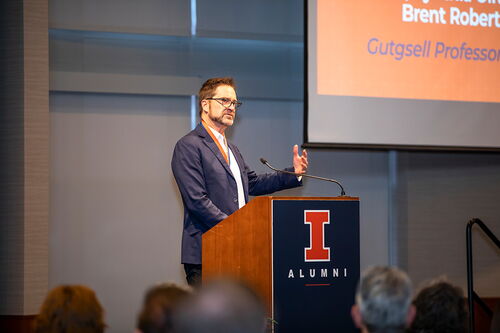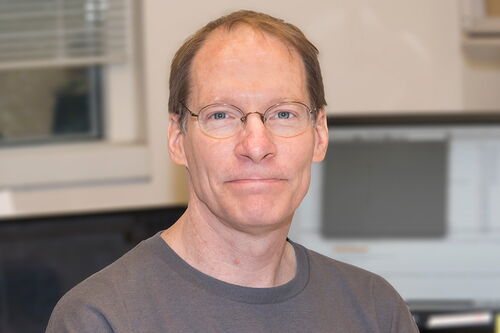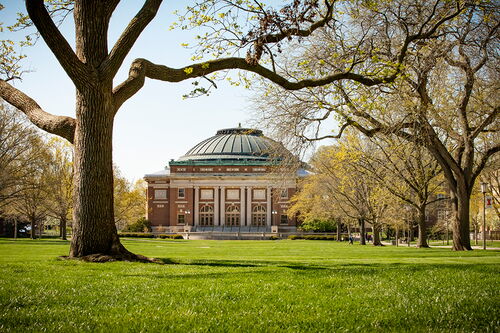Finding answers in the dark
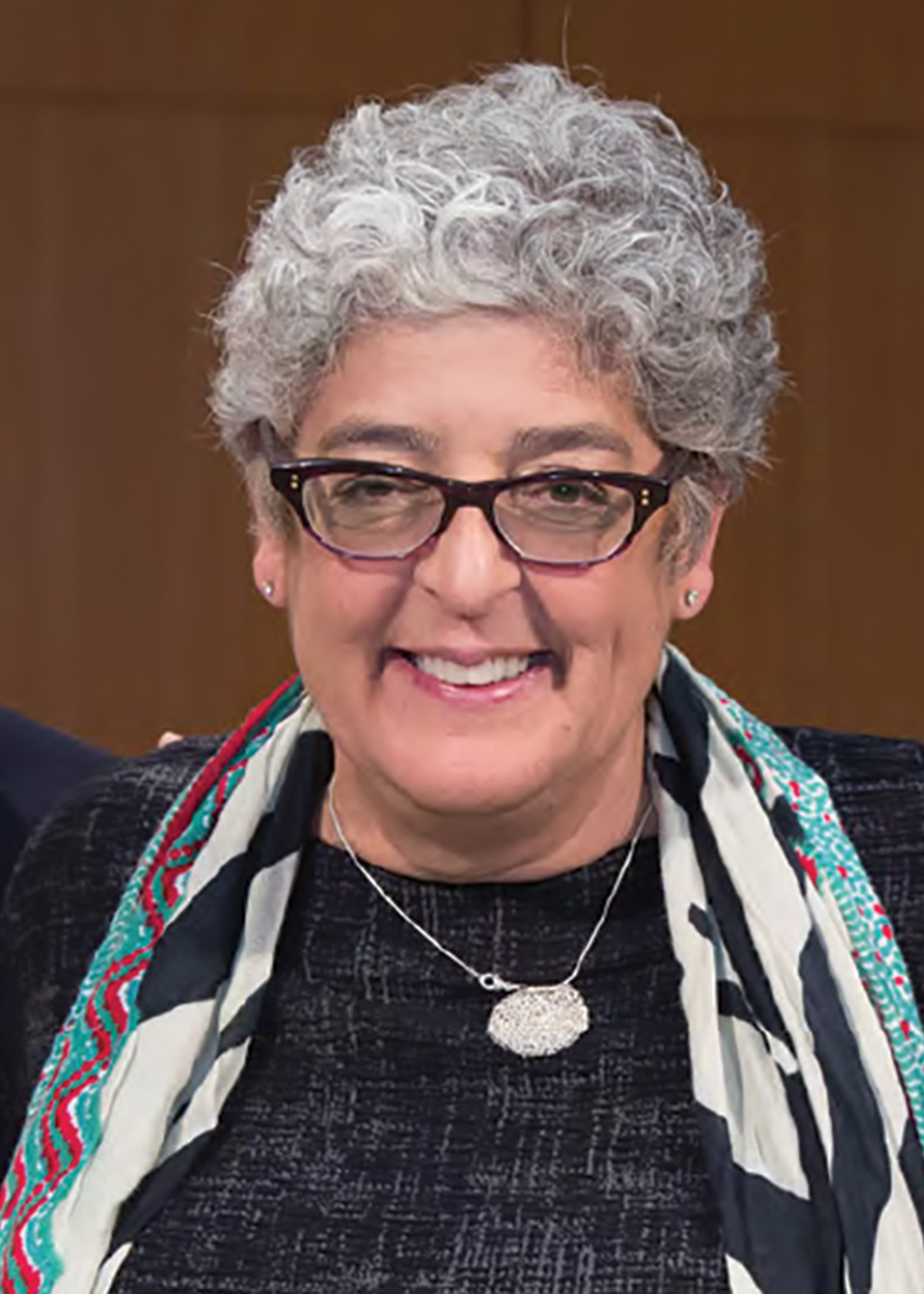
In an ironic twist of science, it took mutant plants, grown in total darkness, to shine a spotlight on how plants respond to sunlight.
Joanne Chory (MS, ’80; PhD, ’84; microbiology) used her findings from mutants to trace the complete pathway of what happens at the molecular level when plants sense light, beginning with cell receptors. This research put Chory on a path to becoming one of the leading plant geneticists in the country. She has garnered all kinds of accolades over her long career, including being a member of the U.S. National Academy of Sciences since 1999 and winning the 2012 Genetics Society of America Medal. Most recently, she was awarded a 2018 Breakthrough Prize for her pioneering research on plant growth, development, and cellular structure.
She has also been a Howard Hughes Medical Institute (HHMI) investigator since 1997, and she was the first HHMI investigator to use a plant as the primary organism of study. But her first big breakthrough goes back to a 1989 paper in Cell about mutant strains of Arabidopsis thaliana, which “think they see the light when they haven’t.” In other words, these plants responded to the dark in the same way that a typical plant would respond to light.
This mutation is not desirable because healthy plants should be seeking the light, Chory said. Plants need the light to produce food, but with this mutation, they will not move above the ground in search of light. They will remain in the dark.
Although this mutation is not good for plants, it was a key to Chory’s research at the Salk Institute for Biological Studies. Work on the mutants led her to find a whole class of genes behind the plant’s response to light. She also discovered that a single gene was responsible for preventing plants from reacting to the dark as if they’ve seen the light.
“This finding was met with some skepticism at first,” she said, “because people said this is a very complicated process. Why would plants rely on one gene to keep it from happening? But plants do.”
Working on mutants also enabled her to pinpoint the genes involved in making a steroid that all plants use as a growth hormone. As one colleague put it, Chory “lets the mutants lead.”
Chory grew up just north of Boston as the third oldest in a family of six children, with three younger brothers who tested her mettle. She said that living in a large clan prepared her for coping with the dynamics of working in a large lab, such as the one at Illinois.
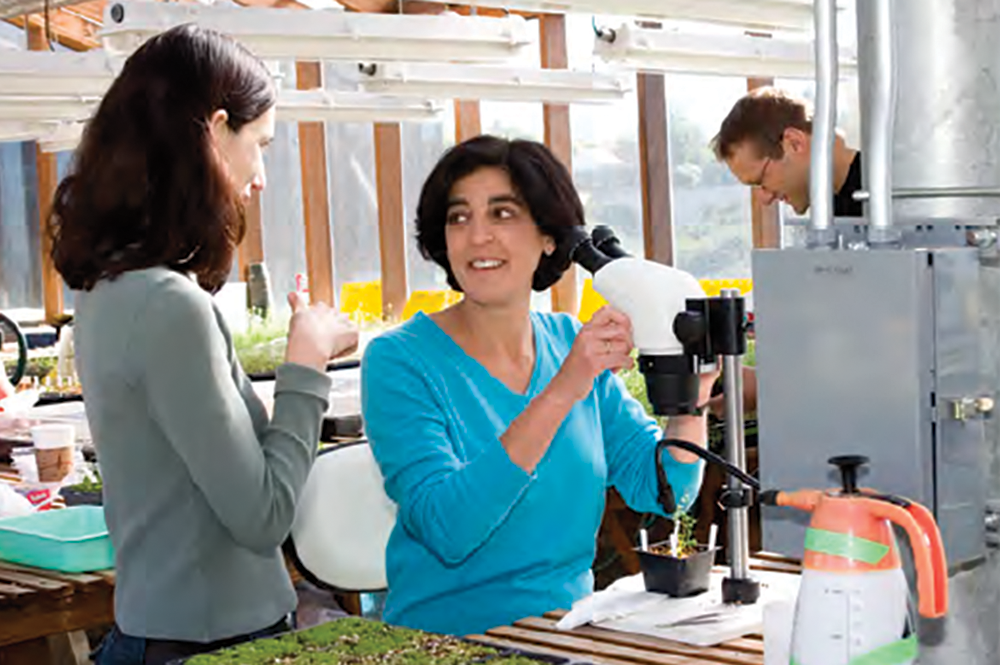
After receiving her bachelor’s degree from Oberlin College in 1977, Chory came to Illinois to study microbiology. She says it was an exciting time for microbiology at U of I, with Illinois professors Carl Woese and Ralph Wolfe making breakthroughs that changed the world’s conception of the tree of life. She worked in the lab of Samuel Kaplan, professor of microbiology, an experience that taught her how to run a large lab.
“I really liked Sam’s style,” she said. “We knew he was always there for us, but he wasn’t completely hands-on. That’s the way I have run my own lab, so Sam had a big influence on me.”
After Chory received her doctoral degree from Illinois, she did her postdoctoral work at Harvard University, where she moved into plant genetics. She said the timing of this choice was right because 1983 was a landmark year in plant genetics, as scientists began to apply the new tools of molecular biology on plant systems for the first time. She also became part of the first generation of scientists to use Arabidopsis thaliana, a small flowering mustard plant, as a model for plant growth.
In more recent research, she has been looking at the intense battle that occurs between adjacent plants fighting over light. Plants may look passive in a field, but a fierce competition for sunlight is taking place.
Plant photoreceptors can detect light of different wavelengths, and when they sense far-red light being reflected by adjacent plants, they know their neighbors are casting shade on them. This triggers the plant to start growing rapidly in a race to outgrow the nearby plants.
“The plant acts as if it doesn’t have enough light, elongating the stem and keeping the leaves small as it tries to outcompete the neighboring plant,” she said.
However, she also points out that these adaptations in the struggle for light can lead to less biomass and less seed. The bottom line: Yields are lost.
Her lab is also starting to turn some of its attention to climate change issues by looking at ways for plants to more effectively trap carbon dioxide in deep roots. Carbon dioxide emissions are the major culprit behind warming trends worldwide.
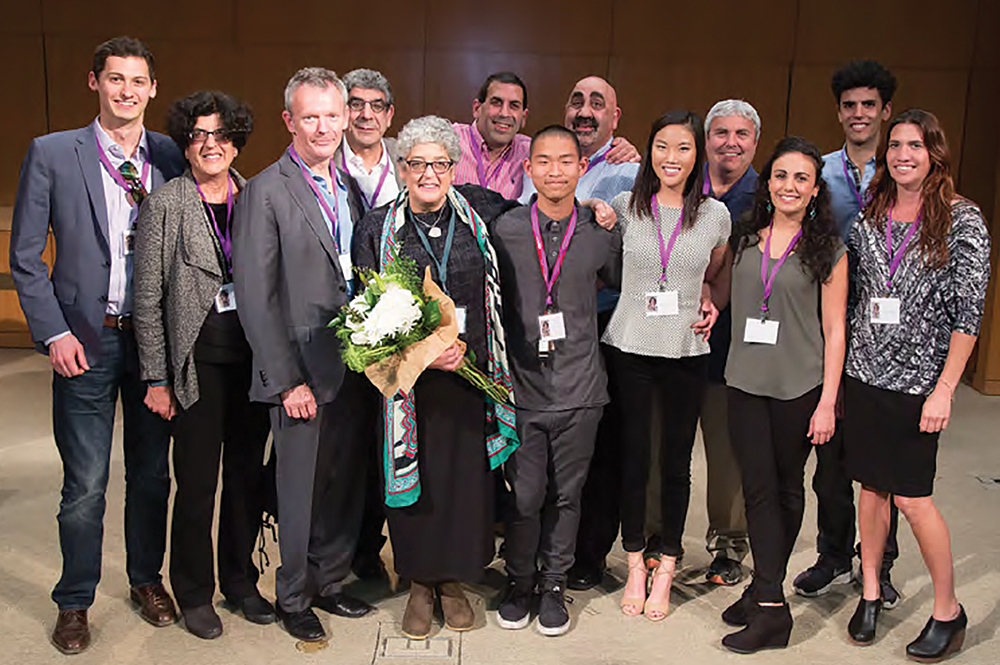
“This is a good time for biologists to step up,” she said.
Chory has operated her Salk Institute lab for almost 30 years in La Jolla, California—a city on the ocean just north of San Diego. Being by the water may explain why some of the “equipment” stored in her lab includes surfboards piled up against the wall.
In 2016, her lab registered its 10,000th day of operation, and Chory also celebrated her 60th birthday. To honor both milestones, colleagues at Salk held a symposium in her name—a testament to her impact on others.
“Amazing person. I’ll always be grateful,” said one colleague, who credits her for igniting his career.
Today, Chory said she still draws upon the inspiration she received at Illinois. She fondly recalls how Ralph Wolfe taught her to use a Winogradsky column, a long glass tube containing pond mud, water, and carbon. She stored the Winogradsky column in the window of her U of I lab for three years, and she could see how various kinds of bacteria in the mud partitioned themselves along the length of the tube.
“You could see how the organisms found a sweet spot to grow,” Chory said.
Likewise, she has found a sweet spot of her own to grow and thrive at the Salk Institute, and she says she is grateful for the role that Illinois played in setting the stage for this work.
“Looking back on my time at U of I, it had a huge impact,” she said. “That was where I learned to design a good experiment that told you something. I’m very grateful to the people there who gave me a hard time when I needed to be given a hard time.”
This story originally appeared in the Spring 2018 LAS News magazine.






